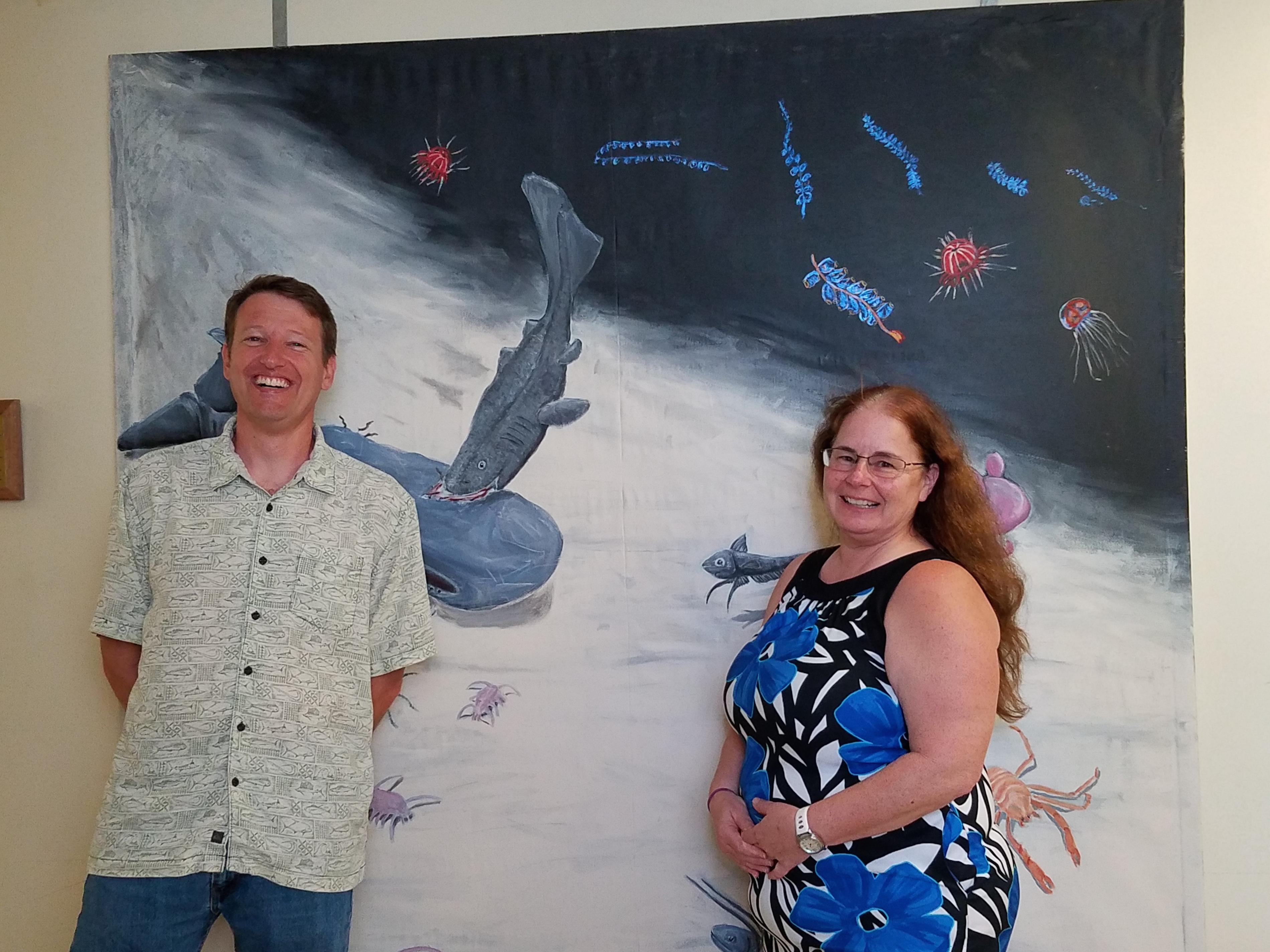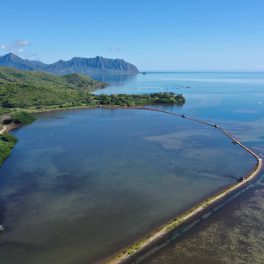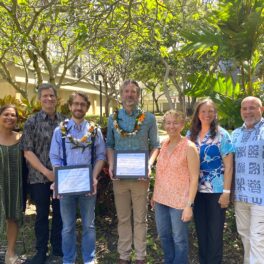Art installation in Marine Science Building shows sea life, from surface to deep
 Jeff Drazen and Michelle Smith in front of the mural depicting the abyssal plain. Credit: Michelle Smith.
Jeff Drazen and Michelle Smith in front of the mural depicting the abyssal plain. Credit: Michelle Smith.
A new art installation depicting ocean life from the surface to the abyssal seafloor opened recently on the sixth floor of the University of Hawai‘i at Mānoa (UH Mānoa) Marine Science Building, home of the Department of Oceanography. Artist and Windward Community College biology instructor Michelle Smith painted three large murals showing the major zones of ocean life—the sunlit layer (epipelagic), the dark zone of water below (mesopelagic), and the seafloor (abyssal plain)—and the organisms living there.
Smith and oceanography professor Jeff Drazen met at the UH Marine Center open house and the two realized they share a passion for education and instilling interest and excitement about the ocean.
“Art and science might seem different at first but they are very complementary,” said Drazen. “We are visual creatures and imagery and art is a wonderful way to quickly convey concepts and ideas. Art is a great way to reach people.”
The panels that Smith created illustrate some of the interesting adaptations of deep sea animals and paint a scene of the remote environment that is difficult to represent in any other way.
“My interest has always been in deep sea biology, among other areas of marine science,” said Smith. “I didn’t want to show isolated animals. There are a lot of predator-prey interactions that most of us don’t get to see and that we can only imagine. I knew this project would be an opportunity to excite more students into learning about the ocean. I also knew that School of Ocean and Earth Science and Technology (SOEST) Open House would have thousands of children, teachers and parents visit and I wanted to be part that.”
As they developed the concept for this installation, Drazen would advise on the type of organisms and how they would be interacting and Smith would send sketches in response until the concept and species were hammered out.
Smith, with help from artist Jackie Mild Lau, created the frames using all recycled material from Reuse Hawaii and Goodwill. Smith sewed six foot by seven foot panels of silk fabric that went on the frames. The team effort continued with a painting party—WCC art student Emsy and Madelyn K. Higginbotham joined to help with the background and some editing. It took about one month to paint the trio of murals.
When asked about the power of combining art and science, Smith said, “Think about every biology book ever opened. What would it look like without pictures, illustrations or diagrams? Art is another necessary tool for communicating science.”
See more on UH News.




